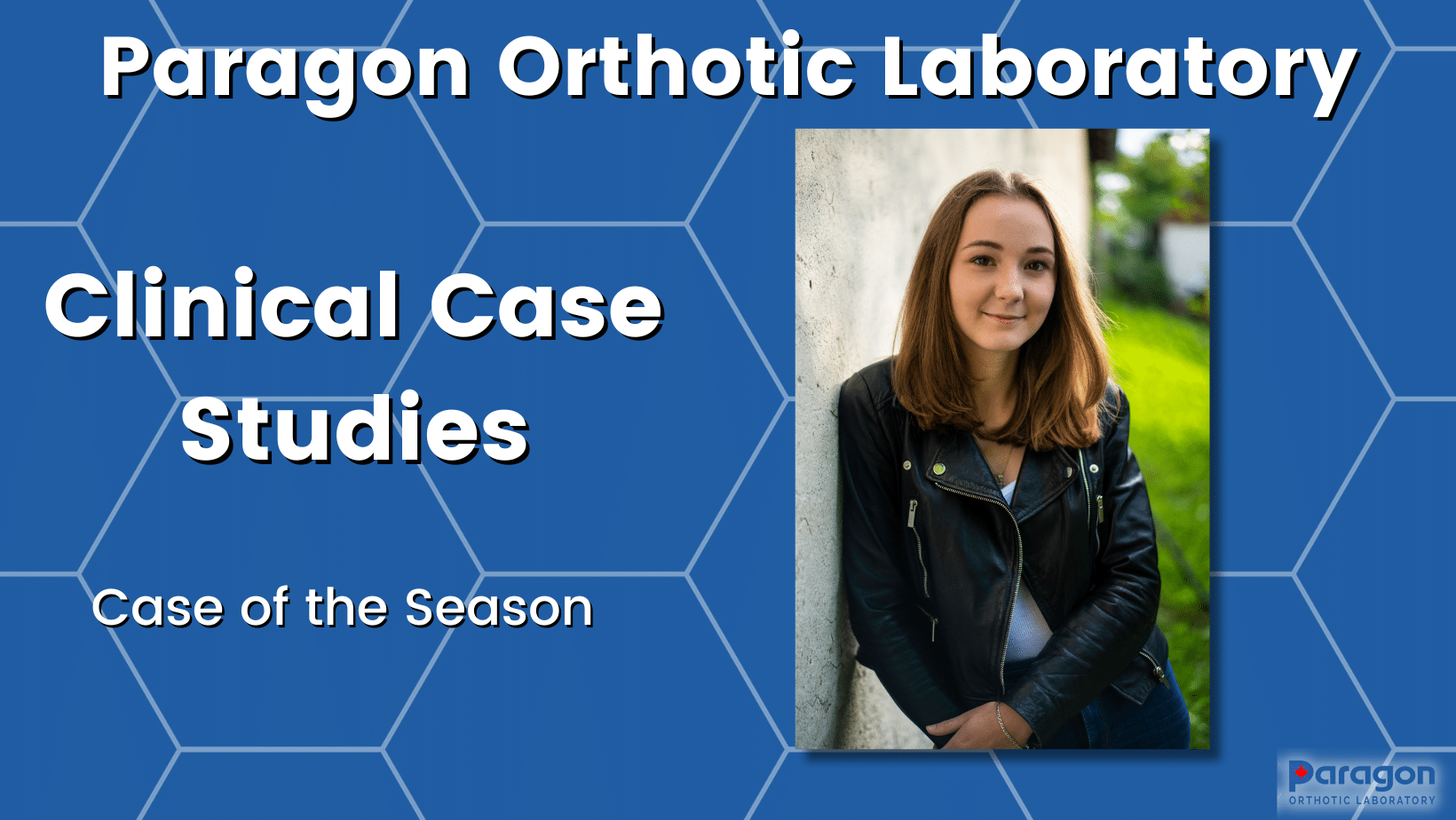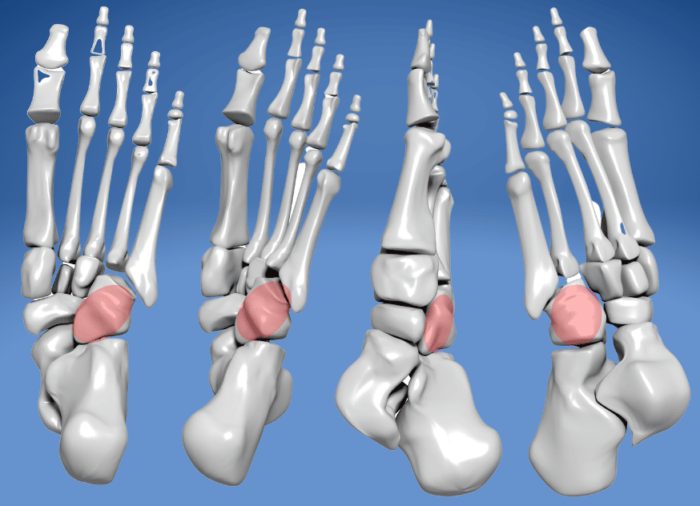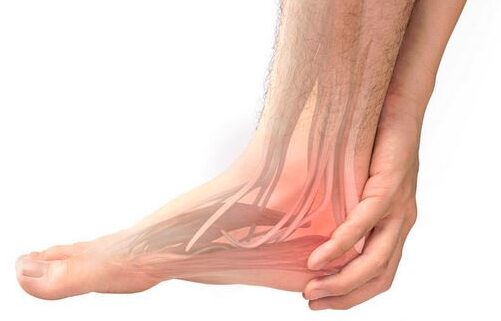
Clinical Case Study
Patient: Female, 14 years, 105 lbs Complaints Redness, pain and

In Brief: About 4% if the athletes with foot problems seen by the authors had cuboid syndrome. The authors say that the syndrome is common but many cases are not recognized or are misdiagnosed. It occurs most often in pronated feet. Pain results from a partial displacement of the cuboid, which prevents its normal range of motion. The pain is relieved by manipulating the cuboid to restore its normal range of motion. A cuboid pad or low-dye strapping helps prevent recurrences. Orthotics may be necessary to correct excessive pronation of the feet.

In reviewing the records of approximately 3,600 athletes with foot injuries, we found that about 4% of their symptoms came from the region of the cuboid bone. The medical literature has little information about cuboid syndrome (also known as locked cuboid, calcaneal cuboid fault syndrome, subluxed cuboid, or lateral plantar neuritis), although it is a common problem.
It is difficult to recognize cuboid syndrome because of referred pain and general foot pain. However, once the symptoms are recognized, diagnosis can be made quickly. The reward is a dramatic response to conservative treatment- often before the athlete leaves the office.
The peroneus longus originates from the upper two thirds of the fibula, the intermuscular septum, and the surface of the fascia. It is the more superficial of the two peroneal muscles. Distally it becomes a tendon traveling posterior to the fibula. It courses in an anterior plantar direction until it reaches the cuboid, where it changes to an anterior medial direction. Here it courses through the peroneal groove on the plantar aspect of the cuboid. It inserts on the lateral base of the first metatarsal and first cuneiform joint. The peroneus longus assists in stabilizing the forefoot by plantar flexing the first metatarsal and first cuneiform.
Symptoms usually appear after the athlete does something they are not accustomed to. Early training, running farther than normal or over uneven terrain and increased speed can all cause cuboid syndrome. Often the patient has twisted the foot after stepping off a curb or otherwise placed force on a fully plantar flexed foot and inverted foot. Some physicians believe that this is a type of subluxation of the cuboid. Osteopaths have described it as a locked joint, and others have referred to it as a nerve impingement.
In our experience, 80% of patients with cuboid syndrome have pronated feet. We have not seen persons who have pes cavus feet and cuboid syndrome. With the foot pronated, the midtarsal joint is unstable and the peroneus longus has a greater mechanical advantage which makes it easier to move the cuboid. This provides a possible basis for the development for this syndrome.
Pain is usually located along the lateral side of the foot or over the fourth and/or fifth metatarsal on the dorsal aspect of the cuboid of the calcaneal cuboid joint. It often follows the course of the peroneus longus, and therefore, physicians may diagnose peroneus longus tendonitis. In our experience, peroneus longus tendonitis is rare. One patient had pain in the Achilles tendon and no symptoms near the cuboid. The physician can usually elicit pain and tenderness in a patient with cuboid syndrome by directly palpating the peroneal groove (plantar aspect of the cuboid) with the thumb (Figure 1). Patients have pain in the area of the cuboid while walking. The primary differential diagnosis should include stress fracture of the cuboid or base of the metatarsal, calcaneonavicular coalition, or peroneal tendonitis. X-rays are not helpful.

The pronated foot allows the peroneus longus to exert its greater mechanical advantage during early training, increased activity and walking or running over uneven terrain. Because the cuboid is the fulcrum of this pulley device, the muscle can pull the lateral aspect of the cuboid dorsally which allows the medial aspect to move down into a more plantar position. The cuboid then becomes locked and lacking its normal range of motion, it may cause pain. Once the range of motion has been restored, the pain will usually subside. We will describe a manipulation that reverses this process and restores the normal ranges of motion.
The treatment we have found effective for cuboid syndrome is a specific manipulation that attempts to re-establish proper alignment of the calcaneocuboid joint by moving the medial aspect of the cuboid dorsally and laterally simultaneously. The patient stands with their back to the physician and leans against a wall or the back of a chair for support. The physician stands behind the patient and instructs them to bend the knee until the lower leg is at a right angle to the thigh. The physician grasps the forefoot with their fingers and places the thumbs, one over the other, plantarly on the cuboid bone (Figure 2a). The thigh, knee, leg, ankle, and foot should be relaxes. The cuboid is manipulated with a quick downward thrust, applying direct pressure with the thumbs so that it moves both dorsally and laterally with respect to the calcaneus (Figure 2b). The physician’s elbows must be fairly close together and the arms, wrists, and hands should be relaxed. Care should be taken not to stretch the superficial peroneal nerve by making sure the knee is adequately flexed.
Immediately following the manipulation, the patient is allowed a two-to-three minute rest. Then the physician should again apply pressure to the plantar aspect of the cuboid in an effort to elicit the pain. The pain is usually markedly decreased or gone immediately following manipulation.
The longer the patient has had this condition, the longer it usually takes to recover. Pain present for only one week usually responds to one or two manipulations. Pain present for a month requires three to four manipulations. If symptoms have been present for six months or longer, it usually takes six months for complete recovery. There is usually a 50% improvement immediately after manipulations.
Following treatment, it is a good idea to prescribe a neutral orthotics to prevent excessive pronation and provide proper calcaneal cuboid alignment to prevent re-harm. Some physicians use a cuboid pad plantarly after manipulation to resist plantar flexion. Or they support the foot with low-dye strapping, pulling it in a medial direction to resist the counter force of the peroneus longus.

Stanley G. Newell, DPM; Alan Woodle, DPM
Illustrations: Terry Boles ©

Patient: Female, 14 years, 105 lbs Complaints Redness, pain and

We normally post articles about specific pathologies or cases of

The plantar fascia is a band of connective tissue running
| Cookie | Duration | Description |
|---|---|---|
| cookielawinfo-checkbox-analytics | 11 months | This cookie is set by GDPR Cookie Consent plugin. The cookie is used to store the user consent for the cookies in the category "Analytics". |
| cookielawinfo-checkbox-functional | 11 months | The cookie is set by GDPR cookie consent to record the user consent for the cookies in the category "Functional". |
| cookielawinfo-checkbox-necessary | 11 months | This cookie is set by GDPR Cookie Consent plugin. The cookies is used to store the user consent for the cookies in the category "Necessary". |
| cookielawinfo-checkbox-others | 11 months | This cookie is set by GDPR Cookie Consent plugin. The cookie is used to store the user consent for the cookies in the category "Other. |
| cookielawinfo-checkbox-performance | 11 months | This cookie is set by GDPR Cookie Consent plugin. The cookie is used to store the user consent for the cookies in the category "Performance". |
| viewed_cookie_policy | 11 months | The cookie is set by the GDPR Cookie Consent plugin and is used to store whether or not user has consented to the use of cookies. It does not store any personal data. |